Co-host Cities of the Beijing Olympic Games
2008-08-30BystaffreporterETHELLU
By staff reporter ETHEL LU
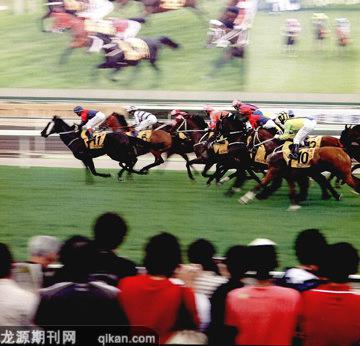
IN August, Hong Kong, Qingdao, Tianjin, Shenyang, Shanghai and Qinhuangdao, as co-host cities of the Beijing Olympic Games, will respectively host the equestrian, sailing and soccer competitions.
Hong Kong:
Capital of
Horse Racing
Hong Kong Special Administrative Region is a leading international trade center, as well as the “capital of gourmets” and a “shopping paradise.” It is also a paradise for horse lovers, and the equestrian events of the Beijing Olympic Games will be held there.
Horse racing was introduced to Hong Kong from Britain in 1841, and has since remained a mainstream sport there. Chinas open policy initiator Deng Xiaoping once said that after Hong Kong returned to China, the people of Hong Kong could still dance and watch horse races as before, setting peoples hearts at ease. His promise has been kept to the letter.
The people of Hong Kong have a saying: “Life is alive with horses, and dull without them,” which expresses the importance of horses in their lives. Of the six million inhabitants of Hong Kong, more than two million are horse racing fans. Therefore, it is no wonder Hong Kong has been chosen as the venue for the Olympic equestrian events.
It is convenient to reach Hong Kong from Beijing. There are 10 flights to Hong Kong per day. People can also first fly to Shenzhen, and then take the train to Hong Kong from Luohu Port.
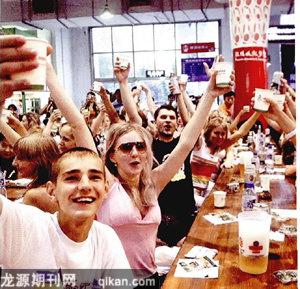
The most famous tourist attraction in Hong Kong is Disneyland. It occupies 126 hectares of land, is the first Disneyland in China and the fifth in the world, a must for tourists. With a panoramic view of Victoria Harbor – the best known of the dozen harbors in Hong Kong – and all of Hong Kong Island from the top of it, Taiping Mountain is another wonderful destination for visitors, particularly for a night tour. And the Star ferry is a unique means of transportation in Hong Kong, just like the double-deckers in London and pedicabs in Beijing. Tourists can best experience Hong Kongs charm by touring in Star ferries.
Hong Kong is recognized as a shopping paradise. The shopping venues are concentrated in Central, Tung Lo Wan and Tsim Sha Tsui. The Landmark in Central has concentrated top-notch commodities from around the world, and Tung Lo Wan is famous for its multi-story shopping malls, such as Time Square, Caroline Center, and the World Trade Center. Open-air markets at Jardines Crescent sell fashionable garments and ornaments, and the Tsim Sha Tsui in Kowloon gathers various kinds of shopping centers catering to modest and well-heeled consumers, such as the Ocean Center, Sun Plaza, the Palace Mall, the Peninsula Hotel Shopping Arcade, and the Park Lane Shoppers Boulevard.
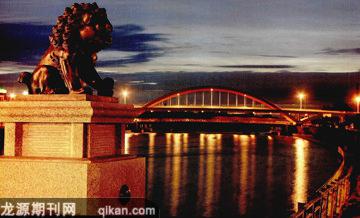
Tourists in Hong Kong can sample Chinese and Western food from various places. The Chinese food is mainly Cantonese cuisine, plus representative dishes of various cuisines in China. Besides Japanese, Korean, Thai and Italian style restaurants, people can also taste dishes from Mediterranean countries, Nepal, North Vietnam, Spain, Argentina and Portugal.
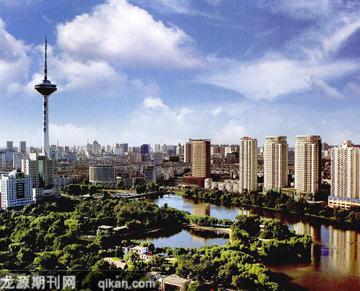
Dim sum restaurants are local specialties. The diversity of menus ranges from European egg tarts to Chinese steamed buns, from Yunnan rice-flour noodles to Italian spaghetti, and from Yangzhou stir-fried rice to Portuguese chicken rice. There are also unique Hong Kong mixed drinks, such as a mixture of coffee and lemon juice. Famous dim sum restaurants include Kam Fung Tea Restaurant (Wanchai), To Yuen Noodle Restaurant (Hennessy Road, Wanchai), Tsui Wah Restaurant (a chain restaurant, the one in Central is on Wellington Street), Cheung Hing Coffee Shop (Yik Yam Street, Happy Valley), and Lan Fong Yuen (Gage Street, Central, Hong Kong Island).
Nightlife in Hong Kong is rich and colorful, and there are a multitude of bars. The most famous is Centrals Lan Kwei Fong, where there are more than 50 bars. Although it is a place frequented by white-collar workers, the prices are not high. If you want to dance and drink, you are advised to go to Wanchai and Tsim Sha Tsui, and those who seek luxury can go to Felix of the Peninsula Hotel, which has the best bars, the boldest interior decoration, unique toilets and the most expensive wines.
Qingdao: Born for the Ocean
Qingdao is a city on Chinas eastern coast. From July to September the temperature ranges from 20℃ to 28℃, which is the best season for tourism. Qingdao has the largest beach in Asia, and also many world-renowned enterprises, such as Haier Group, and Tsingtao Beer. The Qingdao International Beer Festival held in July and August attracts many visitors from around the world.
From Beijing to Qingdao there are seven flights daily. Tourists can also take a train to Qingdao, and it takes only six hours by Chinese bullet trains.
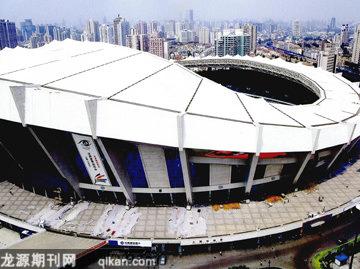
Qingdao used to be a German colony, and many tourists to Qingdao like to visit the church on a hill in the southern part of the city, built in 1910 by the German governor. The church resumed religious services in 1980 after its renovation.
Qingdao Jutting Pier is located on the northern side of the Qingdao Bay, and is an important city landmark. It was built in 1892, the earliest military pier in Qingdao.
A must for tourists in Qingdao is the Badaguan Villa Area, in which are concentrated villas in the architectural styles of more than 20 countries, such as Russia, Britain, France, the United States, Denmark, Greece, Spain, Switzerland, and Japan. It is known as a “world architectural expo.”
Qingdao is a good place to swim. The Huiquan Sea Swimming Beach has a capacity of tens of thousands of swimmers. A record high was set in 1997, with 350,000 swimmers taking to the water. Another two popular swimming beaches are the No. 2 Bathing Beach (in Badaguan Scenic Area) and the No. 3 Bathing Beach (at Zhanshan Cove).
The sailing events of the Beijing 2008 Olympic Games will be held at the Qingdao International Sailing Center, which is on the sea outside Fushan Cove. The sailing events are in nine classes, and nearly 1,000 athletes and coaches and referees from 60 countries will participate.
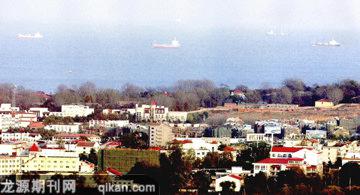
Tianjin:
The Large City Nearest to Beijing
Tianjin is 120 kilometers from Beijing, the largest port in northern China and the economic center of the Bohai Rim.
Tianjins architectural styles include both traditional Chinese structures and historical buildings in British, French and Italian styles. Tianjins snacks are well known. The Nanshi Food Street shops mainly sell regional cuisines, concentrating representative foods from all over the country. In addition, Yangliuqings New Year woodblock prints, painted clay figurines of the Zhang Family, and the kites of the Wei Family are representative Chinese folk handicrafts.
It is very convenient to travel from Beijing to Tianjin. The best means is by train or coach. Every day, dozens of trains shuttle between the two cities. It takes only 70 minutes to reach Tianjin from Beijing by express train.
The former British and French concessions in Tianjin, including five main streets, such as Chengdu Avenue and Chongqing Avenue, and more than 20 surrounding streets, have preserved their Western-style buildings, creating an “international architectural museum.”
St. Josephs Cathedral, located in the eastern section of Xining Avenue, Heping District, was built by French missionaries in 1916. Religious activities are held on Sundays and other Catholic holidays. Ancient Cultural Street is located between the Dongmalu and the Haihe River. Various kinds of folk handicrafts, four treasures of stationery, and calligraphy and paintings are available in hundreds of Qing Dynasty-style buildings. Yangliuqing New Year woodblock prints and painted clay figurines of the Zhang Family are sold in shops here. The Shenyang Avenue Antique Market, located at the junction of Shenyang Avenue and Shandong Road in Heping District, is the largest antique collecting and distribution center in the country, and the Tanggu foreign goods market in Tanggu District was the first imported goods trading market in north China.
As a co-host city of the Beijing Olympic Games, the soccer preliminary competitions will be held in Tianjin from August 7 to 15.
Shenyang:
A Modern City Characterized by Historical Sites
Shenyang has four distinct seasons, and its mean temperature in summer is 24℃. Shenyang is the largest rail and air transport hub in Northeast China, and also the largest old industrial base in the country. It is convenient to take the train from Beijing to Shenyang. There are 10 express trains daily, and it takes only four hours to reach the city.
Shenyang is famous in China for its history and culture. The Shenyang Imperial Palace is the second largest imperial palace in the country, after the Forbidden City in Beijing. It was the ruling center of Qing Dynastys first emperor Nurhachi (reigned 1616-1626) and Emperor Huangtaiji (reigned 1626-1643). The imperial palace is full of Manchu characteristics, differing greatly from the Forbidden City in Beijing. It covers an area of 60,000 square meters. Construction started in 1625 and was completed in 1636.
Fuling Mausoleum is located in the eastern suburbs of Shenyang, the tomb of Nurhachi and his wife Empress Xiaoci. There are a total of 108 steps, symbolizing the 36 stars of the Heavenly Spirits and the 72 stars of the Earthly Spirits. Zhaoling Mausoleum is the tomb of Emperor Huangtaiji and his wife Empress Xiaoduan. It is the largest of the three Qing imperial mausoleums outside the Great Wall.
The Wulihe Stadium in Shenyang will be the venue of 12 soccer matches of the Beijing Olympics.
Shanghai:
ACosmopolitan Center
Shanghai is Chinas largest port city and economic center, and also its most fashionable and modern cosmopolitan center. Climbing up Jinmao Tower, the highest building in Shanghai, or the Oriental Pearl TV Tower, one can have a panoramic view of the city.
There are many flights and 10 trains from Beijing to Shanghai every day. The fastest train can cover the journey in 10 hours.
The Bund in Puxi is the landmark of Shanghai and has concentrated buildings of foreign architectural style, from which one can experience the charm of this city. The Bund is four kilometers long from Waibaidu Bridge to Nanpu Bridge. The foreign-style buildings, such as the Pudong Development Bank Building, Asia Building, Shanghai Custom Building, and foreign consulates all have a long history. Tourists are advised to tour the Bund by ship, to see the buildings and enjoy its scenery.
Shanghai Stadium will be the venue of 12 soccer matches during the Beijing Olympic Games.
Chinese Food
Lu Bo Lang Restaurant:Authentic Shanghai dim sum. Address: 131 Yuyuan Road. Tel: 021-63557507
Baoluo Restaurant: Typical Shanghai dishes. Diners need to make reservations in advance. Address: 271 Fumin Road. Tel: 021-54037239
Western Food
Sens & Bund: Delicious Western food. Diners can enjoy Bund scenery. Diners need to make reservations in advance. Address: 6th Floor, 18 Bund, 18 Zhongshan Dongyilu, Huangpu District.
Jean Georges: The chefs are from France, and the food is excellent. Address: 4th Floor, 3 Bund, 3Zhongshan Dongyilu, Huangpu District. Tel: 021-63217733.
Qinhuangdao: A Tourist Destination
Qinhuangdao, in eastern Hebei Province, is 380 kilometers from Beijing, facing the Bohai Sea. It has a pleasant climate and a mild temperature. Famous attractions include Beidaihe and the Golden Coast. Its vast sea, golden sand beach and dense forests make it an ideal summer resort.
Tourists can go to Qinhuangdao from Beijing by taking trains that head for Northeast China. The journey takes only two hours by bullet train.
The most famous tourist attractions of Qinhuangdao are Shanhai Pass, Old Dragon Head and Beidaihe. Shanhai Pass, the pass at the eastern end of the Great Wall, was built in 1381. Old Dragon Head is the starting point of the Ming Dynasty Great Wall, stretching into the sea. Beidaihe beach has a pleasant climate. The 10-kilometer sand beach has beautiful surroundings. In the late Qing Dynasty Beidaihe was made a seaside resort to escape the summer heat. Now it is a popular holiday resort among Hebei and Beijing inhabitants.
The Qinhuangdao Olympic Sports Center will be the venue of 12 soccer matches during the Beijing Olympic Games.
